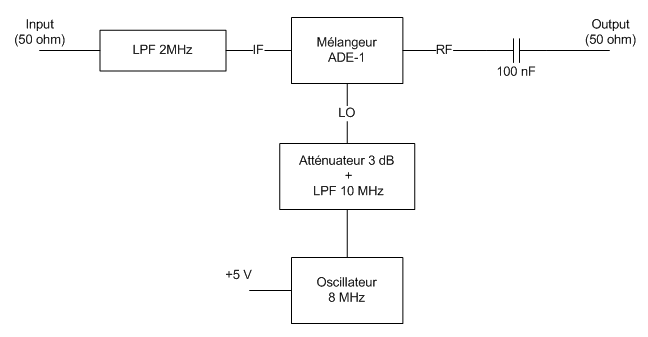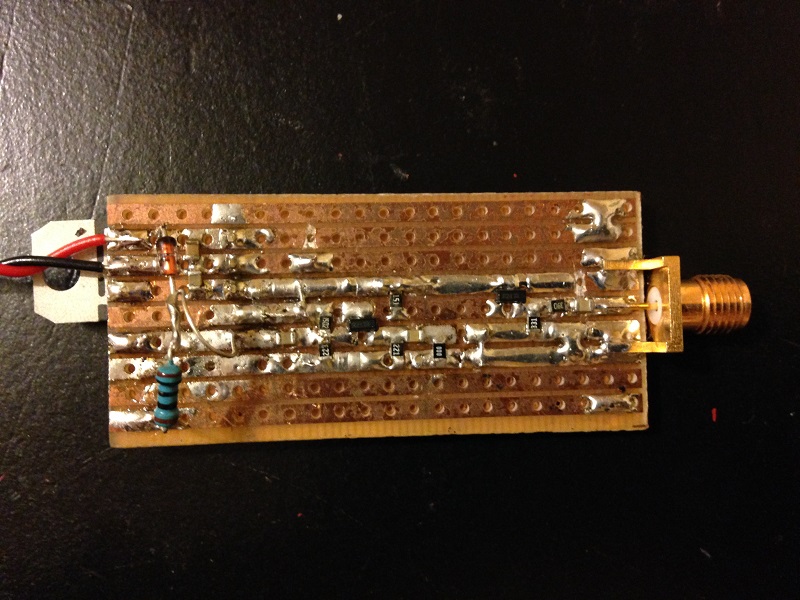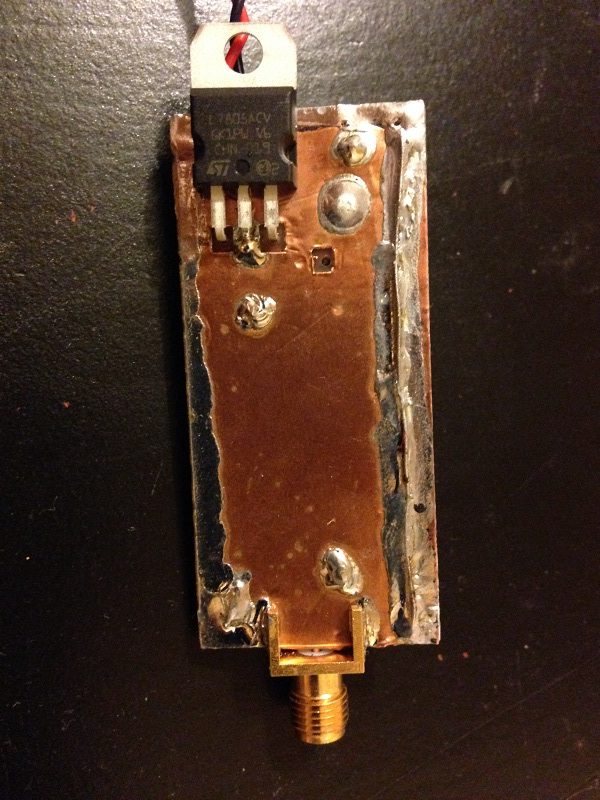tags: noise source, zener
For measuring the noise figure of amplifiers in a 50 ohm system, noise source which generate Gaussian RF white noise are often used. Here I present a simple prototype of such a source based on two transistors and a zener diode. At the heart of the assembly is therefore a zener diode 1N759 which is the source of noise. Then this noise is amplified by an amplifier based on two BFR93A transistors. The first stage of the amplifier provides the bulk of the voltage gain, while the second allows an adaptation of the output to 50 ohms.
The voltage gain simulated under the amp’s LTspice is 16 V / V (fig.1) and the output matching to 50 ohm (fig.2) are very good on the whole band.
The proto was made on a prototyping plate. The voltage of the + 5V supply of the transistors is supplied by 7805 to have a stable behavior. The voltage of the + 15V diode supply ideally should also be regulated, however I have noticed that the generated noise hardly varies between the range of +/- 1V from the nominal voltage.
We see that with the source switched off at 50 MHz we measure a noise voltage of 36nV / sqrt (Hz), i.e. -135.9 dBm / Hz, while after switching on the noise increases to 92nV / sqrt (Hz), or -127.7 dBm / Hz. The measurement shows that the noise generated is fairly constant over the entire band. The ENR obtained from the source with respect to the thermal floor of -174 dBm / Hz is then around 46 dB.
We also notice the presence of a peak around 56 MHz which I did not understand the nature, it is probably not an oscillation because there is no harmonic of this frequency. Apart from this peak, the spectrum is clean up to 3 GHz. The next step would be to put it in a shielded box and maybe replace the proto plate with a correct PCB.






